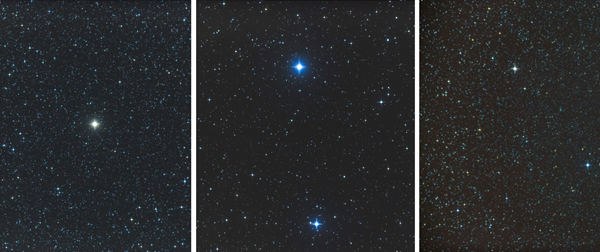Long-time readers of this column know that I have a passion for double stars. I’ve featured them numerous times here in Observing Basics, and before that in a column devoted to double stars in Deep Sky Monthly and Deep Sky Magazine.
So it’s no surprise that I’m often asked for my all-time favorite double stars. In truth, my list tends to be heavily influenced by what’s accessible from the mid-northerly latitude where I live. Not only that, but my list is in constant flux; a current roster of my 100 favorites would be slightly different from lists compiled in past years.
Longtime amateur astronomer Phil Kane of Burney, California, however, has a more systematic way of selecting the best double stars visible from mid-northern latitudes. Here’s how he does it.
“I recently had an occasion to look over the Astronomical League’s 2018 list of its 100 best double stars,” says Kane. “Alongside it in my ‘Doubles’ folder is my oldest ‘Best Doubles’ list from 77 years earlier: Bernhard, Bennett, and Rice’s New Handbook of the Heavens [Whittlesey House, 1941], which featured 96 pairs. It turned out that these two [lists] shared 54 doubles. This means, together, they did not agree on 46 + 42 = 88 other pairs. Because no one would expect any two observers to select exactly the same 100 doubles, I was not particularly surprised.”
However, the differences between the two lists encouraged Kane to compare them to three more: Brian Skiff’s list from Men, Monsters and the Modern Universe (Willman-Bell, 1989; 140 pairs), James Mullaney’s from Sky & Telescope (July 2004, Jan. 2005, Sept. 2006, and May 2007; 100 pairs), and my own list in Astronomy’s March 2016 issue (110 pairs).
In these lists, Kane says “there are 320 unique doubles” — pairs that appear only on one of the lists. On the other hand, “my comparison of all five lists found only 35 doubles to be on all of them.
“These 35 are also in my oldest handbook with a limited selection: In Starland With a Three-inch Telescope [Putnam, 1909] by William T. Olcott. And they are part of the granddaddy of all lists, Admiral W.H. Smyth’s The Bedford Catalogue [Sotheby, Wilkinson & Hodge, 1844],” says Kane, adding that “these ‘survivors’ — consistently recognized for over 175 years by skilled observers — should certainly be considered for the favorite 35 double stars of all.”
Kane’s final list of 35 targets includes a trio of my all-time favorite pairs currently observable in the October evening sky: Gamma (γ) Delphini, Gamma Arietis, and Gamma Andromedae. The trio are all doubles that are bright and wide enough to be enjoyed with even the smallest backyard scope. They are especially delightful when viewed with a modest 2.4-inch refractor and a magnification of 60x to 75x.
Gamma Delphini is the star that marks the Dolphin’s snout. It consists of magnitude 4.4 and 5.0 component stars separated by 8.9″; I perceive their colors as yellowish and bluish. While in the area, also look 15′ southwest of Gamma Delphini for the delicate little pair Struve 2725 (Σ2725; magnitudes 7.5 and 8.2, separation 6.2″).
Gamma Arietis, meanwhile, is a striking near-twin system, composed of sparkling white magnitude 4.5 and 4.6 stars separated by 7.4″. To me, pairs like this take on the appearance of the headlights of some distant cosmic automobile.
Kane’s list also includes the colorful yellow and blue Albireo (Beta [β] Cygni), regarded by many amateur astronomers as the finest double star of all. I consider it rivaled by the topaz and sapphire gemset Gamma Andromedae, primarily because the latter’s magnitude 2.3 and 5.0 component stars are 9.8″ apart (less than one-third the separation of Albireo’s stars), as well as much more eye-pleasing at medium and high magnifications.
If you’d like a copy of Phil Kane’s “35 Time-Tested Double Stars,” or if you have any questions, comments, or suggestions relating to this column, email me at gchaple@hotmail.com. Next month: observing variable stars. Clear skies










